Introduction
The shipping industry established standardized containers to move cargo between different transportation modes including ships and trains as well as trucks. The understanding of overseas shipping container principles, including international container guidelines, serves as essential knowledge for business and personal shipping groups who want to maintain successful logistics management. A complete overview presents a detailed examination of international shipping containers which includes styles and dimensions as well as price rules and optimal approaches for managing efficient worldwide transfers.
Types of Shipping Containers for International Transport
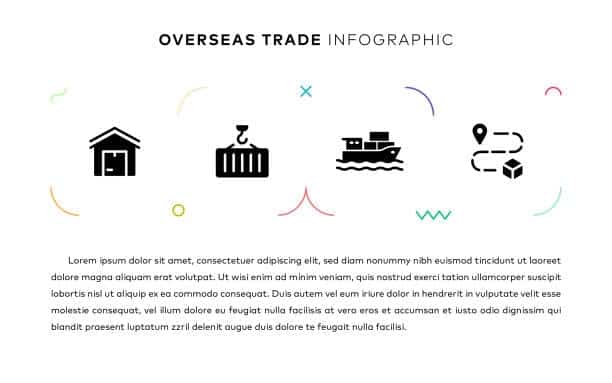
Standard Dry Containers
Standard dry containers serve as the primary tools for moving goods throughout international shipping operations, making them crucial for shipping companies . The extensive range of weatherproof steel boxes consists of standard 20-foot and 40-foot dimensions that dominate the market. These transport containers were built to sustain harsh maritime conditions because they shield shipped goods during lengthy ocean travels.
Standard containers include:
- General-purpose containers for most dry goods
- High cube containers with additional vertical space
- The pallet-wide shipping containers present optimal design specifications to fit European pallet standards.
Dockable shipping containers include one-sided doors that allow simple port and warehouse handling operations. Global shipping infrastructure operates with these standardized dimensions because they make all components compatible.
Refrigerated Containers (Reefers)

The built-in refrigeration systems within refrigerated containers maintain precise temperatures throughout shipment. These devices, also known as the container for shipping overseas, operate under the name reefers. The transport of sensitive products demanding temperature control uses specialized containers in two different types.
- Fresh produce and fruits
- Frozen foods and meats
- Pharmaceuticals and vaccines
- Chemicals requiring temperature control
The power connections which refrigerated containers need at marine power stations and berthing sites provide stable temperatures from departure to destination. Modern reefer containers employ contemporary monitoring systems to deliver precise real-time monitoring systems for product integrity, similar to air freight solutions .
Open Top Containers
Open top containers include an easily removable roof structure instead of permanent fixed tops that allow access for the following features:
- Operations that exceed the size capacity of the cargo require loading from above
- Transportation of tall machinery or equipment
- Standard doors restrict the shipment of goods that need open top delivery services
The containers excel at transporting equipment and manufactured products and machinery that surpasses regular height limitations because they maintain the same dimensions as standard containers.
Flat Rack Containers
Flat rack containers contain floor structures with either foldable or stationary end walls but they do not have side walls or roofs. This design accommodates:
- The cargo exceeds regular container dimensions due to its large size
- Heavy machinery and industrial equipment
- The shipping materials consist of structural steel and lumber and pipes.
The specialized design allows these containers to handle atypical large items in a standardized shipping environment.
Tank Containers
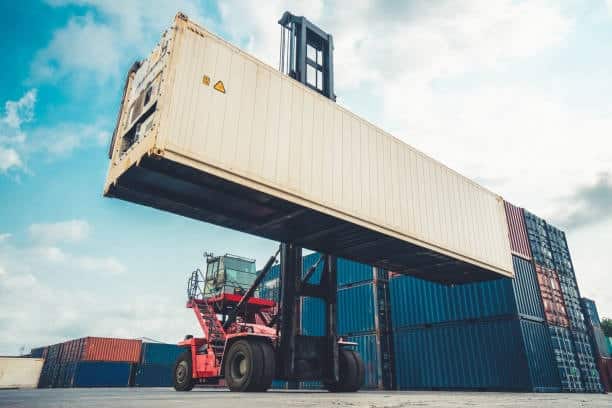
The tank container design includes a stainless steel tank mounted inside an ordinary shipping frame intended for moving liquid materials that fall into these categories:
- Chemicals and hazardous materials
- Iiquid loads consisting of food-grade products such as oils and juices.
- Industrial liquids and petroleum products
Each container unit must satisfy exact international standards that specify rules for transporting liquid cargo including problematic materials.
Standard Shipping Container Dimensions
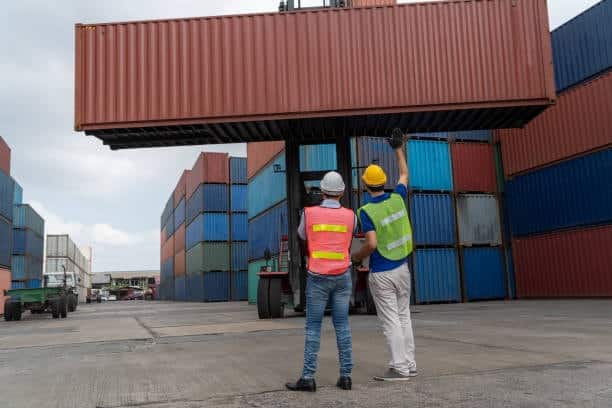
20-Foot Containers
Twenty-foot equivalent units (TEUs), often utilized in a full container load, function as the basic measurement units which container shipping operations use. A 20-foot container typically offers:
- External dimensions: 20′ length × 8′ width × 8’6″ height
- Internal dimensions: 19’3″ length × 7’8″ width × 7’10” height
- Maximum payload: Approximately 25 tons
- Internal capacity: 33.2 cubic meters
The containers provide an excellent solution for transporting dense, heavy loads when weight restrictions start to limit the use of available space.
40-Foot Containers

FEUs function as double-length TEUs because they extend to 40-foot dimensions followed by:
- External dimensions: 40′ length × 8′ width × 8’6″ height
- Internal dimensions: 39’5″ length × 7’8″ width × 7’10” height
- Maximum payload: Approximately 30 tons
- Internal capacity: 67.7 cubic meters
The larger dimensional capacity of these containers creates more favorable shipping costs for big shipments dealing with light-weight products.
High Cube Containers
High cargo containers deliver additional height through the following specifications:
- Standard widths and lengths (typically 40-foot)
- Additional height (9’6″ external versus standard 8’6″)
- Approximately 13% more internal volume
High cube containers extend vertical space which enables stacking of additional cargo or allows shipment of tall items.
Container Shipping Costs and Considerations
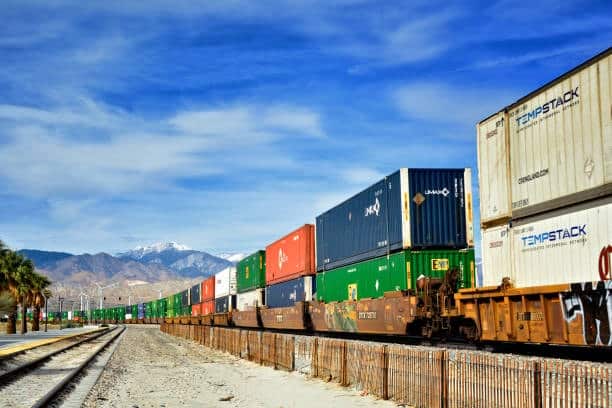
Freight Rates and Pricing Factors
Multiple variables, including shipping rates, determine the price changes of shipping containers as they move through the market:
- The established shipping lanes charge different amounts than less-used routes because established shipping routes tend to get competitive rates.
- Refrigerated reefers along with open tops lead to higher freight rates because standard dry containers remain less expensive.
- The prices rise during pre-holiday peak seasons because demand increases significantly during these times.
- The cost of fuel directly affects shipping prices via Bunker adjustment factors (BAFs) because fuel prices experience changes.
- The availability of containers and their pricing is strongly affected by two main market factors: disruptions within supply chains and traffic problems at ports as well as worldwide events.
Additional Shipping Expenses

The practice of overseas container shipping requires organizations to cover multiple extra expenses which exceed basic freight rates, impacting customers .
- Ports charge Terminal Handling Charges (THC) as fees that encompass container loading and unloading tasks.
- Documentation Fees: Expenses for required shipping paperwork and customs documentation
- Import duties which vary between nations and based on product classification patterns are part of Customs Duties and Taxes.
- The protector against damages or misplacements that occurs during movement of goods is called insurance.
- The usage of shipping containers past their designated free period results in charges named Demurrage and Detention.
- Shipping containers between ports requires additional expenses for moving them through inland areas using trucks and rails.
Accurate budgeting becomes possible and unexpected shipping costs become avoidable only through proper comprehension of these expenses.
Preparing Goods for Container Shipping

Proper Packing Techniques
Shipping container price shifts depend on various market factors during their path through the market:
- Shipping lines that operate established routes receive special prices from shipping routes because these established routes have competitive rates.
- Open-top and refrigerated reefers require a higher price for shipment because standard dry containers remain more economical.
- Prices increase at times prior to major holidays as market demand reaches its peak point during those periods.
- The prices of shipping services fluctuate through Bunker adjustment factors (BAFs) because fuel prices change.
Two marketplace factors named supply chain disruptions and global events together with port traffic issues powerfully influence both container availability and their costs.
Loading Strategies
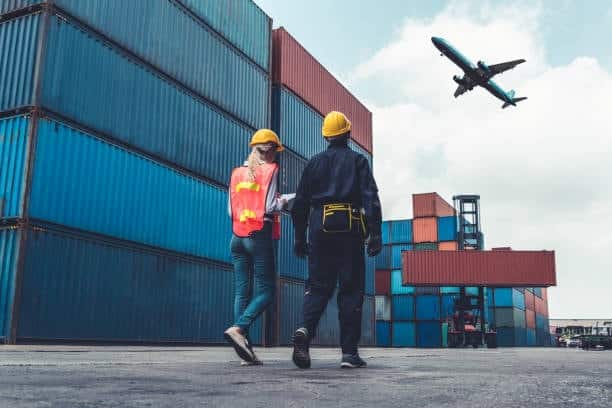
Under the practice of overseas container shipping organizations must pay costs above fundamental freight rates for multiple additional expenditures.
- Heavier items should be placed at the base of the stack with lighter goods situated above them
- Position all cargo weight equally on top of the container base.
- Various items need to be secured in place to stop their movement amid transportation.
- It is advisable to plan how cargo will be unloaded from multiple destinations when a container may receive partial unloading.
- Always keep pathway openings available since inspections may be necessary
A correct loading procedure both safeguards items for delivery and ensures efficient container space utilization which leads to potential cost reduction.
Documentation Requirements

Any international shipping process needs precise documentation, including considerations of container size, to function smoothly.
- Commercial Invoice: Details the sale transaction between exporter and importer
- A container inventory lists all items packed inside.
- Bill of Lading: Contract between shipper and carrier
- The document called Certificate of Origin provides proof about the production location of goods.
- Dangerous Goods Declaration: Required for hazardous materials
- The shipment of restricted goods in particular countries requires import/export licenses from the authorities.
Commercial document requirements differ between international locations because destination countries demand supplementary documentation like permits or certificates based on item types.
Customs Regulations and Compliance
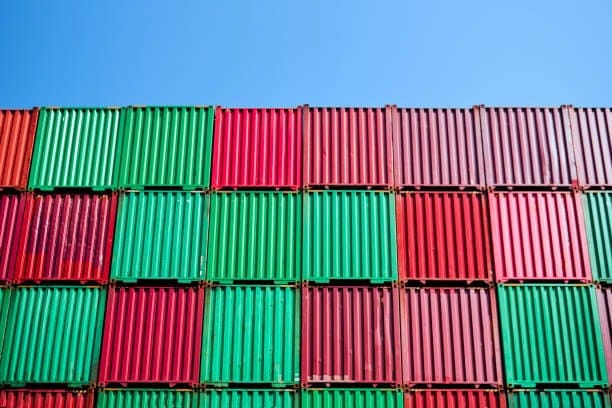
Import Restrictions and Prohibited Items
Every country sets banned import regulations that generally affect particular products.
- Agricultural products and food items
- Pharmaceuticals and medical devices
- Electronics and telecommunications equipment
- Nation-specific restrictions apply to textiles along with clothing products
- Cultural artifacts and intellectual property
Discovering restrictions particular to each destination before shipping household goods will help companies avoid delays and penalties together with cargo seizure.
Harmonized System Codes
International trade products use the Harmonized System (HS) as a standardized system that applies numerical codes for product classification.
- Six-digit codes are internationally standardized
- Each country maintains the right to extend its HS classifications through additional digit addition.
- The correct product categorization determines which duties as well as taxes will apply
- Mytical shipment classification leads to both monetary fines as well as extended delivery times.
Experienced customs brokers enable proper goods classification when conducting international shipments.
Customs Clearance Process

The customs clearance process demands the completion of multiple essential stages.
- Submission of required documentation to customs authorities
- Review of paperwork by customs officials
- Physical inspection of cargo (for selected shipments)
- The process entails assessment of customs duties together with payments towards taxes.
- Release of goods for delivery
Working with experienced brokers while conducting pre-planning for customs clearance helps to make the process faster and more efficient.
Container Shipping Logistics

Shipping Routes and Transit Times
Global markets are connected through major shipping routes that operate between them.
- Trans-Pacific: Connecting Asia with North America (10-30 days)
- Asia-Europe: Passing through the Suez Canal (25-40 days)
- Transatlantic: Linking Europe and North America (10-20 days)
- Shipping routes between developed and developing regions constitute North-South transit routes.
Shipping durations, especially in ocean freight, differ according to the distance between destinations as well as the complexity of routes and how many transshipment ports are needed and how efficient the ports operate. Companies that work with freight forwarders can determine which routes produce the best results for particular shipment requirements.
Port Selection Considerations
The following factors determine which ports need selection:
- Proximity to origin and destination points
- Port capacity and efficiency
- Frequency of vessel services
- Available intermodal connections
- Port fees and handling costs
- Customs processing times
The choice of ports depends on how well they manage transportation speed and pricing levels while providing reliable delivery performance.
Intermodal Transportation
Multi-node transportation systems are typical within container shipping when they combine specific modes of transportation.
- Ocean vessels for the main international segment
- Trucks for shorter distances and last-mile delivery
- Railways for efficient inland transportation
- The transportation of cargo through river barges serves the operations of inland waterway shipping.
Efficient transportation occurs when modes operate together accurately which reduces travel duration.
Risk Management in Container Shipping
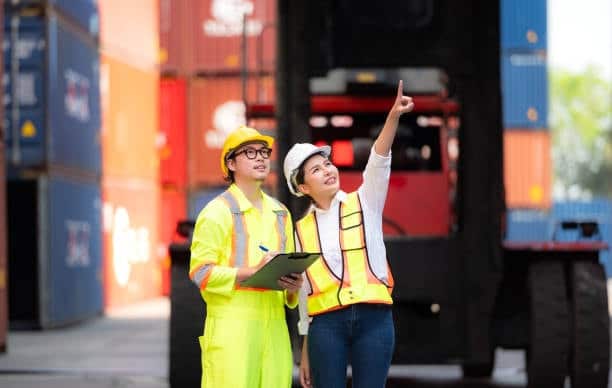
Insurance Options
Through cargo insurance policyholders receive defense against expected losses:
- Marine Cargo Insurance: Covers damage or loss during ocean transit
- All-Risk Coverage: Comprehensive protection against most perils
- The insurance covers damages arising from particular perils specified in the policy document.
- Door-to-Door Coverage: Protection throughout the entire journey
The insurance premium costs only a minimal fraction of value at risk but successfully reduces potential losses.
Tracking and Visibility Solutions
Modernity offers enhanced capabilities to track shipments through better visibility applications.
- The tracking systems monitor containers to deliver live updates on their positions.
- Environmental monitoring for sensitive cargo
- Electronic documentation platforms
- Predictive analysis systems help forecast delays together with disruptions.
These technologies allow shippers to prevent problems from occurring and retain better supply chain oversight.
Contingency Planning
A well-designed contingency plan handles probable breakdowns within the shipping environment.
- Identifying alternative shipping routes
- Establishing relationships with multiple carriers
- Companies need to keep reserve supplies in their destination markets.
- A system of protocols exists for managing delay situations across the supply chain.
Business continuity remains intact through complete risk management approaches when shipping disruptions affect operations.
Sustainable Shipping Practices
Environmental Considerations
The shipping industry experiences growing expectations regarding decreased environmental consequences.
- Carbon emissions from vessel operations
- Water pollution concerns
- Noise pollution affecting marine ecosystems
- The transportation of invasive species occurs through ballast water operations.
Shippers must support sustainability through their decisions regarding transportation providers together with operations strategy.
Green Shipping Initiatives
Several environmental changes are being integrated into the shipping industry.
- The practice of slow steaming cuts down fuel usage.
- The shipping industry turns toward alternative energy sources which include both LNG and biofuels.
- Shore power connections at ports
- Advanced hull designs and propulsion systems
- Carbon offset programs
Loaning support to environmentally dedicated carriers serves to bolster sustainability practices in the shipping industry as a whole.
Regulatory Developments
International regulations continue to evolve:
- IMO 2020 sulfur cap limiting emissions
- Ballast water management requirements
- Energy Efficiency Design Index for new vessels
- Carbon Intensity Indicator for operational efficiency
Business adaptation of shipping strategies relies on staying up-to-date about regulatory developments.
Working with Shipping Partners
Selecting Freight Forwarders
Traffic facilitators expand their value through container shipping by providing essential involvement in two ways:
- The process of securing transportation requires use of different carriers and transportation modes.
- Managing documentation and customs requirements
- Negotiating rates with carriers
- Providing visibility and tracking information
- Offering guidance on regulatory compliance
Make sure to evaluate freight forwarders based on their expertise with industries along with their coverage areas as well as their technological capabilities and their ability to deliver high-quality service.
Direct Carrier Relationships
Security issues demonstrate that direct carrier partnerships provide better cost benefits to exporters moving large shipping volumes.
- Potential for volume-based discounts
- Priority during capacity constraints
- Access to specialized equipment
- Simplified communication channels
- Companies can request tailored sailing schedules from carriers to transport big shipment volumes
Companies build superior competitive positions through well-made relationships with strategic carriers in international business ship overseas destination country.
Third-Party Logistics Providers
3PL providers provide their clients with extensive supply chain management solutions.
- End-to-end logistics management
- Warehousing and distribution services
- Customs brokerage capabilities
- Consolidated purchasing power
- Advanced technology platforms
The company can benefit from third-party partners who specialize in running these complicated international shipping operations for organizations that lack extensive logistics capabilities.
Future Trends in Container Shipping
Digitalization and Automation
Technology continues transforming container shipping:
- Blockchain solutions for documentation and transactions
- Internet of Things sensors for enhanced cargo monitoring same container load
- Artificial intelligence for route optimization and predictive maintenance
- Ship terminal operations that make use of automation result in faster unloading processes port to port.
- Digital platforms connecting shipping stakeholders
Tariff to take advantage of these innovative technologies early creates benefits for improving supply chain performance.
Alternative Shipping Methods
Uniting with modern solutions helps sustain container shipping operations.
- Air-sea combinations for time-sensitive cargo
- The establishment of China-Europe railway services operates across international borders.
- Smaller regional vessels serving secondary ports shipping company
- Short-sea shipping for coastal transportation
Multiple alternative transportation solutions for sending a container overseas offer companies options to handle particular logistical needs.
Market Consolidation
Continuing evolutionary changes are happening in the shipping industry as its structure unfolds.
- Carrier alliances controlling major routes
- Terminal operator consolidation
- Integration of shipping and logistics services
- Investment in digital platforms and marketplaces
Business success depends on knowing how industry changes affect service options and pricing arrangements.
Conclusion
Successful overseas container shipping needs thorough planning together with focused detail work and collaboration with logistics specialists who hold experience in this field. Businesses achieving operational excellence in international shipping require knowledge of containers alongside dimensional specifications and pricing information and compliance requirements which helps them reduce shipping expenses. The success of global trade requires business owners to remain aware of industry developments in technology and sustainability since they create new possibilities for competitive advantages. The proper planning combined with strategic business approach enables overseas container shipping to function as a secure base for global business growth.




